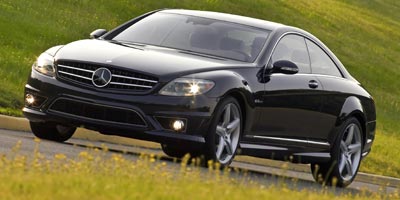 2008 Mitsubishi Eclipse GS Hatchback
2008 Mitsubishi Eclipse GS HatchbackFor more than a decade and a half, the Mitsubishi Eclipse has been one of America's more popular sport coupes. Its success can be attributed to several factors that have remained constant throughout its run, including sleek styling, powerful engines, a decent amount of comfort, and affordability.
Interestingly, these traits also describe the traditional domestic rear-drive sport coupe, and some have described the Mitsubishi Eclipse as the Japanese version of a pony car. They point out that the Eclipse has typically not been as nimble as other imported coupes, and has instead been best at straight-line performance. The Eclipse has also always been designed solely for the U.S. market and is a rarity in other parts of the world.
The original Eclipse was the result of a joint venture in the mid-'80s between Mitsubishi and Chrysler, known as Diamond Star Motors (DSM). For model-year 1990 at a plant in central Illinois, the partners started production of what was known as the Diamond Star triplets: similar versions of the same Mitsubishi-engineered car, including the Eclipse, the Eagle Talon and the Plymouth Laser. The DSM partnership no longer exists as it once did, and only the Eclipse remains in production.
In total, there have been four generations of the Eclipse. Measured in terms of all-around performance and design, the latest one can be considered the best yet. But earlier Eclipses, assuming they have been cared for properly, could become an affordable and enjoyable purchase for the budding sport coupe enthusiast.
The latest Mitsubishi Eclipse has been available since the 2006 model year. It has a hatchback body style and can seat up to four people. Mitsubishi builds it on the same platform used for its Galant sedan and Endeavor SUV. There are two trim levels: GS and GT. The Eclipse GS is reasonably well equipped and comes with a 2.4-liter four-cylinder engine good for 162 horsepower. The main draw of the Eclipse GT is its 263-hp, 3.8-liter V6.
 Both versions are front-wheel drive. The GS can be equipped with either a five-speed manual or a four-speed automatic transmission with a sequential-shift Sportronic mode. The GT comes with a six-speed manual, with a five-speed Sportronic automatic optional. Popular options include a sunroof and a powerful Rockford Fosgate audio system.
Both versions are front-wheel drive. The GS can be equipped with either a five-speed manual or a four-speed automatic transmission with a sequential-shift Sportronic mode. The GT comes with a six-speed manual, with a five-speed Sportronic automatic optional. Popular options include a sunroof and a powerful Rockford Fosgate audio system.In reviews, the Mitsubishi Eclipse has earned favorable commentary for its powerful V6 engine, comfortable front seating and stylish interior. Noted downsides include a hefty curb weight that dulls handling, sluggish acceleration on four-cylinder models and a large turning radius.
Most consumers shopping for a used Eclipse will encounter the third-generation model, which was sold from 2000-'05. Like the current model, it has a hatchback body style, front-wheel drive and four-cylinder or V6 power. It's smaller than the current model, however, and less refined. The RS and GS trims of this generation were powered by a 2.4-liter four-cylinder good for 154 hp. The GT had a 205-hp 3.0-liter V6. All could be had with either a five-speed manual transmission or four-speed automatic.
Although this Eclipse was fairly popular with consumers, it attracted little critical acclaim. In Edmunds.com tests, editors noted that the Eclipse was not as sporting as previous versions and had a low-quality interior. Nor did the car change much during its run, though in 2003 Mitsubishi added a GTS trim that had a slightly more powerful V6 (210 hp) and more standard equipment.
When new, the first- and second-generation Eclipses were considered some of the best affordable sport coupes available. The original debuted in 1990. This Eclipse was also a hatchback, and these early models can be identified by their pop-up style of headlights. There were four different trim levels, each offering its own mix of powertrains. The top-of-the line model was the Eclipse GSX, which boasted a 195-hp turbocharged four-cylinder engine and all-wheel drive. In 1992, minor updates were made, including the addition of fixed headlights.
 Compared to the foreshortened, almost stubby first Mitsubishi Eclipse, the second version (1995-'99) seemed long, sleek and gorgeous. It was a bit bigger than the earlier car and in many ways very similar mechanically. Normally aspirated or turbocharged engines were again offered, as was front-wheel or all-wheel drive.
Compared to the foreshortened, almost stubby first Mitsubishi Eclipse, the second version (1995-'99) seemed long, sleek and gorgeous. It was a bit bigger than the earlier car and in many ways very similar mechanically. Normally aspirated or turbocharged engines were again offered, as was front-wheel or all-wheel drive.With any of these early models, poor resale values have sunk purchase prices to very attractive levels. But reliability has never been a strong point for the Eclipse, and finding a well-maintained one (especially a turbocharged model) will be key for the smart shopper.




















